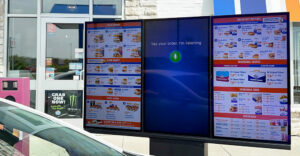
Broadband providers have been pushing so-called triple play offerings as a means to fatten their coffers, but those services are also contributing to increasing support costs and drooping customer satisfaction.
“The competitive environment that characterizes today’s broadband and value-added services landscape benefits the growth of many digital lifestyle products and services,” noted a report released Tuesday by Parks Associates, a market research and consulting firm.
“At the same time, however,” the report continued, “the increasing complexity of IP services, home conductivity and convergence — all associated with today’s bundled services strategies — stands as a significant risk to deteriorating customer service and increased customer support costs.”
Satisfaction Declining
Customer satisfaction with broadband providers has been trending downward recently, said Steve Kirkeby, executive director for telecommunications and technology for J.D. Power and Associates.
An important factor contributing to that fall has been the rise of triple play services — phone, high-speed Internet and TV — by broadband providers, he maintained.
“We’re see a general decline in customer satisfaction across voice, video and data because they’re being bundled together and their complexity is increasing,” Kirkeby told CRM Buyer.
“Mainstreaming triple play technologies to people who are not technologists, not early adopters, is causing the dip in satisfaction,” he added.
Rising Expectations
As broadband providers introduce more complex services, there’s a corresponding rise in what customers expect from the providers, according to the Parks report.
“The increasing numbers and types of value-added offerings paradoxically create greater expectations from the consumer for support and hand-holding,” the report noted.
When consumers buy triple play services, J.D. Powers’ Kirkeby explained, they expect a certain level of knowledge from their provider. “We expect someone who offers a triple play to be conversant with all the technology in our homes,” he said.
Support Costs Increasing
As providers sell their customers more technology, they can expect their support costs to rise, the Parks report reasoned.
“The bottom line is that if broadband service providers are going to rely on more advanced services and customer-premises equipment to support their service strategies,” the report observed, “they should carefully consider how they are going to account for the inevitable increase in customer support costs wrought by both increased and longer phone calls to their help desk agents.”
Whether they like it or not, triple play providers are going to be the first stop for consumers looking for support, according to Parks.
“As the demarcation point moves inward beyond broadband modems, service providers must assume the liabilities associated with home-networked devices,” the report stated.
“Our research indicates,” it continued, “that no matter who provides the network devices, home network users are most likely to call their Internet service providers when they encounter problems.”
Expensive Calls
Those calls can be very expensive for a provider, Parks noted. Their average cost is 80 US cents to $1 per minute. While the average broadband service call lasts about 10 minutes, a home networking call averages twice that.
Customer service calls related to home networking problems alone could cost broadband service providers in the United States from $200 million to $500 million annually, Parks predicted.
Not only are the calls costly, but they can contribute to customer dissatisfaction because so many of the dial-ins are deemed “out-of-scope.” Anywhere from 20 to 50 percent of calls into a support center may be “out of scope” calls, according to Parks.
“The service provider may not have deployed the home networking equipment or various consumer electronic devices being employed by consumers to enhance their digital lifestyle, but it is incurring more of the responsibility in supporting it,” Parks said.
Yawning Chasm
A broadband provider’s tools and processes are set up for connectivity of a wide area network, explained Ron Renjilian, CEO of Peak8 Solutions, a provider of support services and a sponsor of the Parks report.
“Anything within the network relating to its accessibility of your applications or usability of those applications or appliances isn’t well served,” he told CRM Buyer.
That can result in a yawning gap between provider and user, he observed.
“As the digital home becomes more complex and the penetration of broadband exceeds 50 percent in the United States, there is a large chasm between what a service provider believes what they should be providing from a customer support standpoint and what consumers believe should be provided,” he maintained.
Automated Solutions
To cope with rising support costs, Parks predicts providers will increasingly turn to automation.
“Automated tools and processes can be widely implemented at the client level, inside the home, and in many cases, without the customer being aware that they exist,” the Parks report said. Automated solutions, it added, will be “an essential first step in helping to reduce the burden on customer support agents who are fielding phone calls regarding ‘the Internet being broken.'”
Cost control, however, isn’t the only positive that providers can garner from automated systems.
“The triple play means people are becoming more dependent on their technology, so any down time in that technology is a huge pain point for them, and they want to get it fixed as quickly as possible,” Marc Itzkowitz, director for product management for Support.com, explained to CRM Buyer.
“The notion of remote support becomes that much more critical because of expense and time to get the problem solved in a convenient way,” he added.





















































